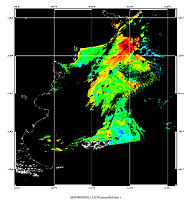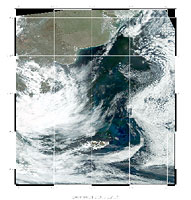

 | |||||||||||||
|
|
Journals 2008/2009Jeff Lawrence
December 9, 2008 The reason for this scientific expedition was to find a microscopic type of phytoplankton known as a coccolithophore. Off the Argentine coast is an area known as the Patagonian Shelf, where coccolithophores blooms are more prolific than any other region on earth. Coccolithphore blooms occur all around the world, especially near coastlines where a supply of iron that is carried by the wind from the continent helps to give a nutrient environment for the coccolithophore blooms to occur. While out at sea for five days we have not seen coccolithophores in great numbers. They are usually most prevalent for the month of December off the Argentine coast. However due to the technology of today we can access satellite imagery that shows us where the blooms are beginning to occur. The photos below one in real-time and the other enhanced show us where these blooms are located. Since the images show them away from our initial track it has been decided by the scientist to make a course adjustment and go where the coccolithophores are. Technology plays a critical role in allowing scientist to make adjustments during research cruises. Our track now will take us further south than planned and we will the go in a grid pattern back and forth for several weeks across the bloom shown in the satellite images. Weather permitting we will then head south of the Falkland Islands instead of the northern track previously planned. I am excited about this change because it may enable us to sea a larger number, and variety of marine mammals as we cross between the Falklands and Antarctica.
Questions of the day:
|
||||||||||||

